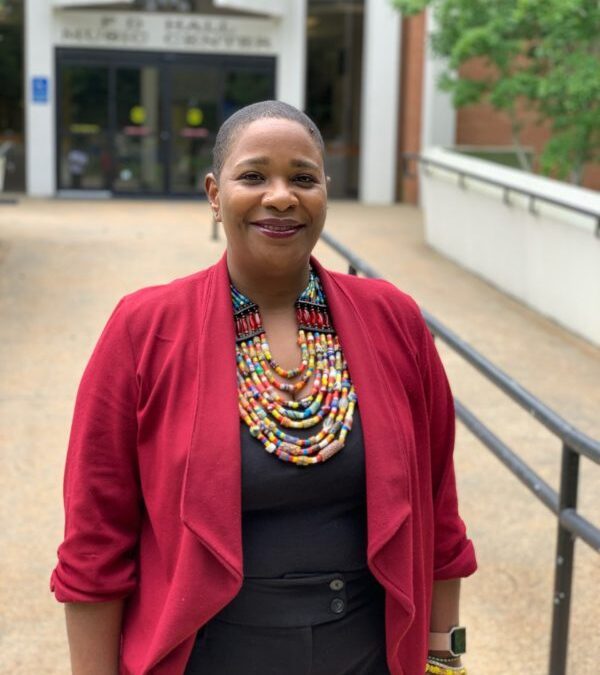For generations, Black music has had a profound and powerful impact on our nation’s cultural heritage. It has shaped a variety of popular genres from rhythm and blues to jazz, gospel, country, rap and more. This month and every month, we continue to honor its roots. Learn from Dr. Lisa Osunleti Beckley-Roberts, Chair of the Department of Music and Associate Professor of Ethnomusicology at Jackson State University, as she shares the rich history along with a playlist of Mississippi Hill Country Blues musicians and songs that have influenced and inspired the artists and songwriters we know and listen to today.
When the story of Blues is told to the world, the small town Holly Springs, Mississippi and the North Mississippi region as a whole, is often left out. But, those who know, know that this region is the Hill Country, and it is the home of a style of blues unlike others and continuing to shape popular music culture. Mississippi Hill Country Blues, like all forms of the blues, is deeply rooted in the cultural memories and experiences of those who first performed it. It builds upon the African and diasporic emphasis upon rhythm as not just beats and timing, but giving syncopation and polyrhythm (both rhythmic elements), an elevated role in music much like that of the melody. The driving rhythm and aggressive groove, established primarily by sitting on one chord for long phrases, set Hill Country Blues apart from other forms like Delta Blues. Hill Country Blues is the soundscape of the region that includes several counties and towns around Holly Spring, Senatobia, and Como, Mississippi. The rich but difficult culture and soil of the area are where Sid Hemphill, Rosa Lee Hill, and Mississippi Fred McDowell got their start and influenced R. L. Burnside, Junior Kimbrough, Terry “Harmonica” Bean, and Cedric Burnside as well as countless other Hill Country artists. These artists continue to influence rock, country, and other forms of American popular music.
Like other forms of blues, artists of the Hill Country genre were known throughout the region and performed often in juke joints, clubs, at picnics or in any gathering where it was possible in North Mississippi and neighboring Memphis, Tennessee before being introduced to the rest of the world through the recordings made by ethnomusicologists Alan Lomax and later George Mitchell. The music, most often played on guitar and sung but also using harmonica and related to Mississippi fife and drum music, features a drone guitar picking style, driving rhythm in the guitar or other lead instrument, and singing that was a blend of speech and song. The style was and most often still is, dance music. It is meant to make a crowd move and this feature is heard even in the ballads. It has always featured characteristics of blues from other areas, as well as gospel and it continues to evolve and incorporate the sounds of other genres.
Since it was first “discovered” by the world outside of Mississippi Hill Country, the blues style has influenced other genres and American culture as a whole. The work of Lomax and Mitchell began this process with field recordings. Later, the release of documentary films such as The Land Where the Blues Began, Deep Blues, and Feel Like Going Home, musicians touring internationally and appearing in films on PBS (The Land Where the Blues Began) and on shows like Mr. Rogers Neighborhood (in 1982), as well as the promotion of recordings of Hill Country musicians by Fat Possum Records and High Water Records, the genre and musicians gained greater notoriety and wider influence. Artists like Dave Stewart of the Eurythmics, Charlie Feathers a country and rockabilly artist, the North Mississippi All-Stars, Black Keys, Bonnie Raitt, Bono, the Rolling Stones and a host of others have cited the style and its artists as being major contributors to their own work and recording tunes from the genre.
Though Mississippi Hill Country Blues has and continues to impact the American soundscape and culture, and it has received exposure, it has yet to be acknowledged as the contributor to American music culture that it is due. Hill Country musicians continue to innovate and influence and are still waiting to be “discovered” by a wider audience.
Hill Country Blues Playlist
1. Sid Hemphill – “The Eighth of January”
2. Othar Turner and Rising Star Fife and Drum Band – “Shimmy She Wobble”
3. Rosa Lee Hill – “Rolled and Tumbled”
4. Mississippi Fred McDowell – “Shake ‘em On Down”
5. Mississippi Fred McDowell – “Baby Please Don’t Go”
6. Mississippi Fred McDowell – “My Babe”
7. R. L. Burnside – “Goin’ Down South”
8. R. L. Burnside – “Let My Baby Ride”
9. R. L. Burnside – “Poor Boy A Long Way from Home”
10. Junior Kimbrough – “You Better Run”
11. Junior Kimbrough – “Sad Days, Lonely Nights”
12. Junior Kimbrough – “I Gotta Try You Girl”
13. Junior Kimbrough – “Done Got Old”
14. Robert Belfour – “Done Got Old”
15. Robert Belfour – “Black Mattie”
16. Terry “Harmonica” Bean – “Catfish Blues”
17. Cedric Burnside – “Step In”
18. Cedric Burnside – “Hard to Stay Cool”
19. Cedric Burnside – “Wash My Hands”
20. Bonnie Raitt – “Thing Called Love”
21. Charlie Feathers – “Can’t Hardly Stand It”
22. Rolling Stones – “You Gotta Move”
23. North Mississippi All-Stars – “Meet Me in the City”
24. North Mississippi All-Stars – “Po’ Black Maddie”
25. North Mississippi All-Stars – “Boogie”
26. The Black Keys – “Going Down South”
Thank you to the Digital Media Association (DIMA) for posting the original article: https://dima.org/celebrating-black-music-month-2022-mississippi-hill-country-blues-by-dr-lisa-m-beckley-roberts/?fs=e&s=cl
Interested in learning more? Check out Save The Music resources below!


